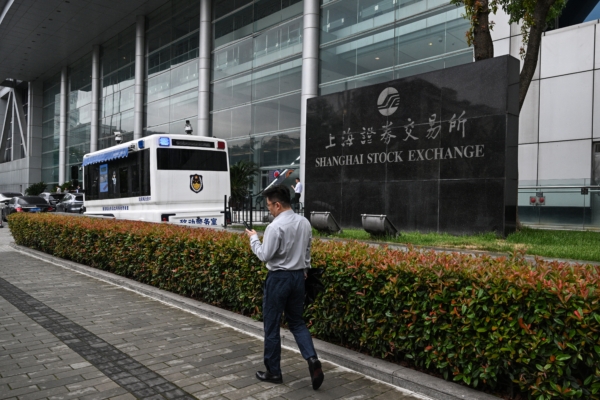The A-share market continued to weaken on July 30. The three major indexes opened lower and closed down, with the Shanghai Composite Index dropping by over 0.9% at one point in the morning session, hitting a new low in over five months. The Shanghai Composite Index 50-day moving average has seen a seven-day decline, with a net outflow of funds exceeding 16.5 billion yuan.
By the closing bell, the Shanghai Composite Index fell by 0.43% to 2879 points; the Shenzhen Component Index dropped by 0.54% to 8468.58 points; the ChiNext Index decreased by 0.29% to 1630.95 points; the STAR 50 Index rose by 0.34% to 710.01 points; the SSE 50 Index fell by 0.56% to 2335.31 points, with a seven-day decline in the daily moving average.
Statistics show that the SSE 50 Index has declined by 1.94% in the past month and by 5.09% in the past three months.
The SSE 50 Index uses the SSE 180 Index as its sample space, selecting the most representative 50 securities with a large market size and good liquidity in the Shanghai stock market to comprehensively reflect the overall performance of a group of leading companies with the most market influence in the Shanghai stock market.
Trading volume in Shanghai reached 269.477 billion yuan, Shenzhen reached 329.999 billion yuan, with a combined total trading volume of 599.477 billion yuan, slightly higher than the previous trading day’s 585.940 billion yuan, marking a second consecutive day of trading volume below 600 billion yuan, with a net outflow of funds exceeding 16.5 billion yuan.
Regarding sector performances, the real estate, education, semiconductor, retail, aquaculture, rental and sales rights, and 6G concept sectors have seen top gains; while the railway equipment, wind power equipment, coal, automotive, power, shipbuilding, and POE film sectors have seen the highest declines. The three major oil companies have continued to decline, with CNOOC falling by over 5%.
Yin Xinxin, founder of “Bull Investment”, told “Cai Xin” that on the 30th, both the Shanghai and Shenzhen indexes hit new lows since adjusting from their highs in May, indicating a weaker overall market trend.
Zheng Hong, Chief Investment Advisor at Huatai Securities, stated that the market rotation speed has been relatively fast recently, mainly due to the unclear main trend in the market. Various funds are still in a wait-and-see mode, leading to a continuous decrease in trading volume in both markets, which is the most direct factor affecting market trends. Additionally, as companies begin to release their mid-year reports, industries or companies with significant fluctuations in performance are seeing investors vote with their feet.
Yin Xinxin believes that the petroleum, coal, and non-ferrous metal sectors are collectively weakening, with these sectors having been in a continuous adjustment since following the major indexes to a phase peak at the end of May, surpassing two months of adjustment. It is expected that the market will continue to experience oscillation and adjustment in the future.

